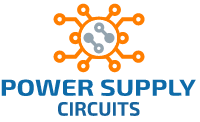This device is used to simultaneously charge for Ni-Cd batteries. The output step-down transformer AC 12V is fed to the rectifying diode bridge, assembled on a 4-diode 1N4007. Smooth capacitor C3 constant voltage supplied to the chip 7808 , the output of which will be regulated voltage 8 V. The transistor T1 ( BC547 ), incorporated on the emitter follower circuit is used as a voltage regulator, which determines the charge current.
The magnitude of this current can be adjusted by potentiometer VR2, or use a switch with three trimmer, each of which is exposed to the desired charge current (90 mA, 180 mA and 300 mA). (The figure lower conclusions potentiometer must be connected). If you want to have the batteries recharged very quickly, select the charge current of 300 mA, the charging time is about 30 minutes. Light-emitting diodes LED1 … LED4 are indicators of the charge, they shine only when a battery charging current flows. On transistors T2 … T5 made permanent sources of charging current. The integrated regulator IC1, install the heat sink.
Parts list : R1, R2 : 100 Ohm R3, R5, R7, R9 : 12 Ohm / 1 W R4, R6, R8, R10 : 220 ohms R11 : 470 Ohm Chips IC1 : 7808 Transistors T1 : BC547 T2, T3, T4, T5 : BD160 Transformer The output voltage of 12 V, current 1 A Potentiometers VR1, VR2 : 10K Diodes D1, D2, D3, D4 : 1N4148 D5, D6, D7, D8 : 1N4007 Capacitors C1, C2 : 0.1 uF C3 : In 1000 mkF/16 Miscellaneous Fuse : 50 mA Housing Power switch A switch on the three positions PCB Power Cord

